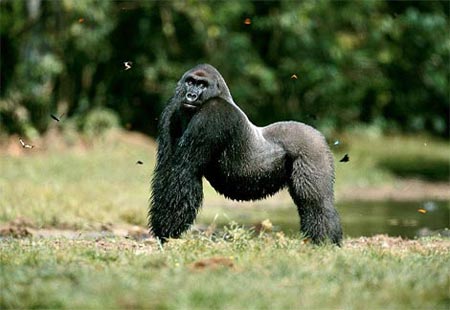“The Endangered Mountain Gorillas: A Precarious Existence and Conservation Efforts”

Mountain gorillas, scientifically known as Gorilla beringei beringei, currently have a global population of less than 900 individuals. Their primary habitat is found in three countries and four national parks, including Bwindi National Park in Uganda and Virunga National Park in Congo. Maintaining the current population is a challenging task that requires dedicated efforts from conservationists. Additionally, the most concerning factors are warfare, deforestation, and human encroachment, which threaten the species’ survival.


Mountain gorillas have developed a thick fur coat that can grow up to 7 cm during the winter, allowing them to adapt well to the cold conditions of Eastern Russia. However, their thick fur also makes them targets for hunting due to their attractive appearance. Additionally, the loss of prey species such as antelopes, buffalo, and rabbits due to human hunting impacts their food supply. Deforestation also threatens their habitat.
These gorillas play a crucial role in their ecosystem as top predators, helping to maintain balance among other species. This balance affects the health of the forest and ecosystem, providing diverse food sources, clean water, and other resources for both wildlife and humans. Conservation efforts not only benefit mountain gorillas but also other species, including Amur tigers and prey like antelopes and deer.
Mountain gorillas have strong and nimble legs, which allow them to carry and hide their prey in trees to prevent other predators from stealing it. They are skilled stalkers and climbers among the large ape family. Their strength allows them to subdue prey up to ten times their size.
Similar to other great apes, they have longer arms than legs and move on the ground using all four limbs, with the weight concentrated on their knuckles rather than their palms. Mountain gorillas are most active from dawn to dusk, typically dividing their day into three meals: morning, noon, and afternoon. They inhabit the slopes of volcanic mountains such as Karisimbi, Mikeno, and Visoke in the Democratic Republic of Congo. Their elevation ranges from 2200 to 4000 meters, characterized by cloud cover, fog, cold temperatures, and dense vegetation at lower elevations that gradually thins at higher altitudes.







